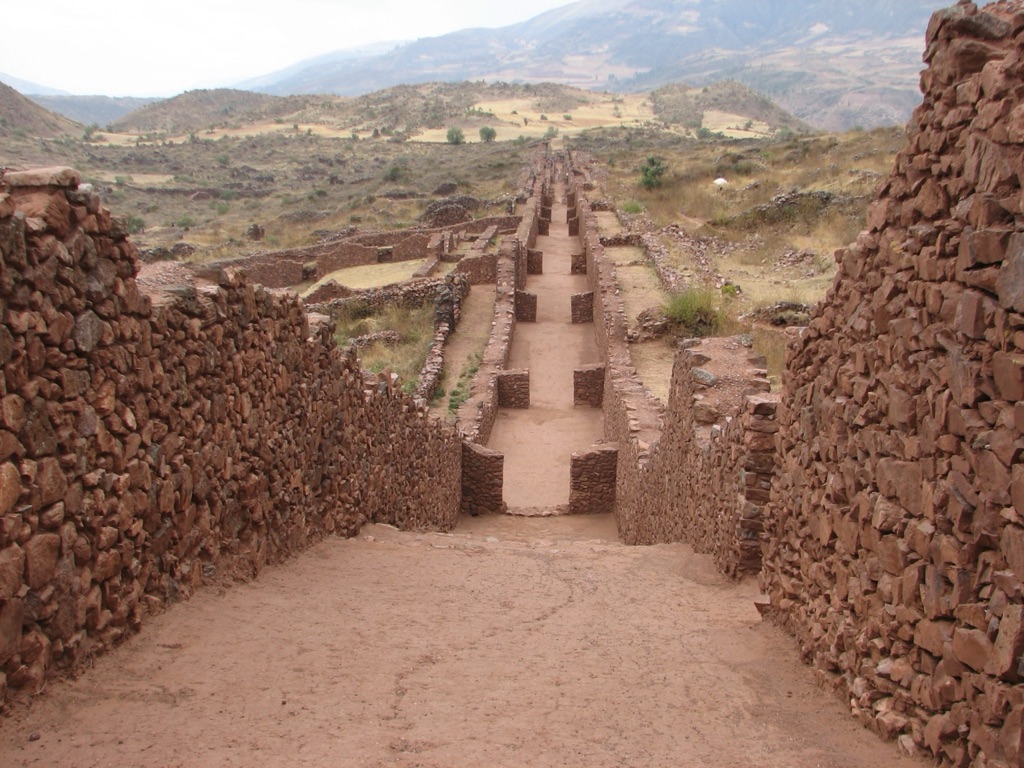Pikillacta is a well-preserved pre-Inca archaeological site located in the Cusco region of Peru. This ancient city stands as a testament to the engineering prowess of the Wari culture, which thrived between 500 and 1000 AD. Pikillacta showcases a vast complex of plazas, dwellings, and a sophisticated network of roads and waterways. Its strategic location and layout suggest it played a significant role in the Wari civilization’s expansion and influence across the Andean highlands.
Get your dose of History via Email
Historical Background of Pikillacta
The Wari Empire, a precursor to the Inca civilization, built Pikillacta during its zenith. Archaeologists discovered the site in the early 20th century, but it wasn’t until later that extensive research began. The Wari people, known for their architectural and cultural influence in pre-Columbian South America, constructed this urban center. Pikillacta stands unique as it was not inhabited by the Incas, who later dominated the region. Instead, it appears to have been abandoned before their rise. The site has not been the scene of any known historical events since its desertion, but it provides valuable insights into the Wari civilization.
Researchers believe that Pikillacta served as a provincial administrative center due to its size and complexity. The site spans over two square kilometers, featuring more than 700 structures. The Wari’s advanced understanding of urban planning is evident in the city’s grid-like layout. Pikillacta’s discovery has helped historians piece together the extent of Wari influence, which stretched from the southern Andes to the coast of modern-day Peru.
Excavations at Pikillacta began in earnest in the 1970s, led by archaeologists such as Gordon McEwan. These efforts have unearthed artifacts and structures that provide a glimpse into the daily life of the Wari people. The site’s abandonment remains a mystery, with theories suggesting it could be due to a major drought or a rebellion against Wari rule. Despite its abandonment, Pikillacta has remained remarkably well-preserved, offering a snapshot of the Wari’s sophisticated culture.
While Pikillacta did not see further habitation after the Wari, its structures have stood the test of time. The site’s walls, some reaching up to 12 meters in height, have endured centuries of exposure. This durability is a testament to the Wari’s skill in stone masonry and construction techniques. Pikillacta’s preservation allows for ongoing study, providing valuable information about the Wari’s social organization, economy, and religious practices.
The historical importance of Pikillacta lies in its representation of the Wari Empire’s reach and organizational capabilities. As one of the largest known Wari sites, it offers a unique perspective on this pre-Inca civilization. The site’s discovery and subsequent research have significantly contributed to our understanding of Andean cultures before the Inca domination.
About Pikillacta
Pikillacta is a prime example of Wari urban planning and architecture. The site consists of orthogonal streets and well-defined compounds, including residential and administrative areas. The buildings were constructed using a consistent method, with stone foundations and double-jamb doorways, a hallmark of Wari design. The city’s layout reflects a high degree of social organization and control.
The construction materials used at Pikillacta were primarily fieldstones held together with mud mortar. The Wari builders employed a technique known as “pirca,” where stones were carefully fitted together without the use of mortar. This method contributed to the longevity of the structures. The city also featured a sophisticated water management system, with canals and aqueducts distributing water throughout the urban complex.
Architectural highlights of Pikillacta include its massive defensive walls and gates, which suggest the site’s strategic importance. The presence of numerous storage facilities indicates that Pikillacta may have served as a hub for resource distribution. The site also contains what appears to be ceremonial spaces, although their exact function remains a topic of research.
One of the most striking aspects of Pikillacta is its scale. The site encompasses over 700 buildings, with some structures having multiple stories. The repetitive nature of the architecture throughout the city suggests that the Wari had standardized building practices, which allowed for efficient construction across their empire.
The meticulous nature of Pikillacta’s construction, from its urban grid to its water management system, highlights the Wari’s advanced knowledge of engineering and city planning. These attributes have made Pikillacta an important site for studying pre-Columbian Andean societies and their approaches to creating sustainable urban environments.
Theories and Interpretations
Several theories exist regarding the purpose and function of Pikillacta. Some scholars suggest it was an administrative center, controlling trade and political power in the region. Others believe it may have had a religious significance, serving as a pilgrimage site or ceremonial center for the Wari.
The mysteries of Pikillacta include the reason for its sudden abandonment. While some attribute it to a societal collapse due to environmental factors, others speculate that internal conflict or shifts in trade routes could be responsible. The lack of significant Inca influence at the site raises questions about its role during the transition between the Wari and Inca periods.
Interpretations of Pikillacta’s architecture and artifacts have had to be matched to historical records and Wari culture. The site’s iconography and ceramic styles provide clues to its ceremonial and cultural practices. However, without written records, much of Pikillacta’s history is reconstructed through archaeological evidence.
Dating of Pikillacta has been carried out using methods such as radiocarbon dating and analysis of ceramic styles. These techniques have helped establish the timeline of the site’s occupation and its relation to other Wari centers. The precision of these dating methods has been crucial in understanding the chronology of Andean civilizations.
Theories about Pikillacta continue to evolve as new discoveries are made. Ongoing excavations and research contribute to a deeper understanding of the site’s significance within the Wari Empire and its impact on Andean history.
At a glance
Country: Peru
Civilization: Wari
Age: Circa 500-1000 AD
Conclusion and Sources
Reputable sources used in the creation of this article include:
- Wikipedia: https://en.wikipedia.org/wiki/Pikillacta

